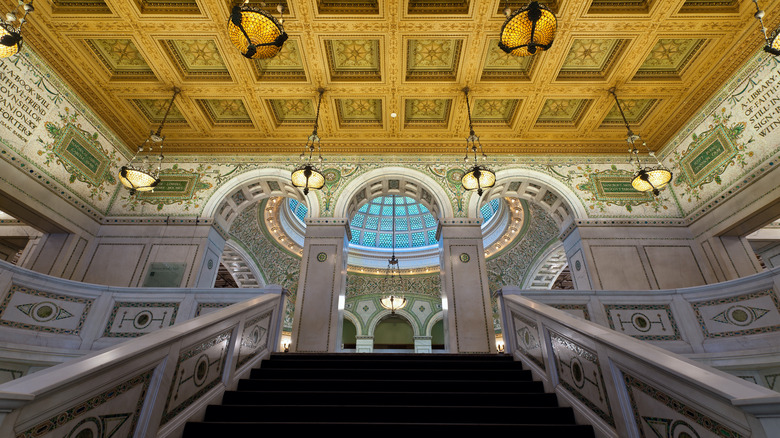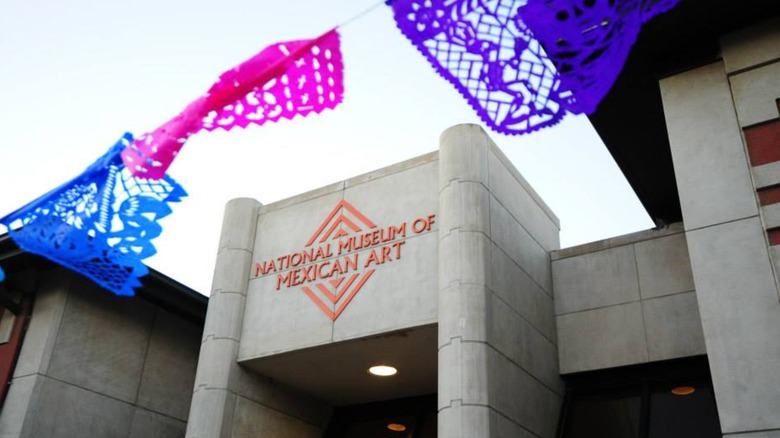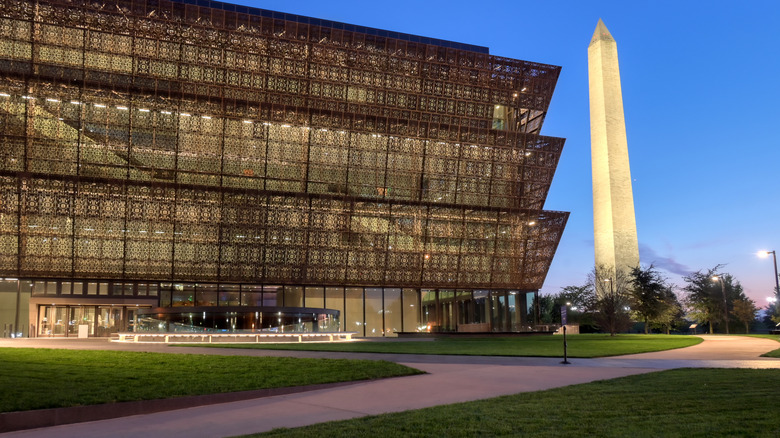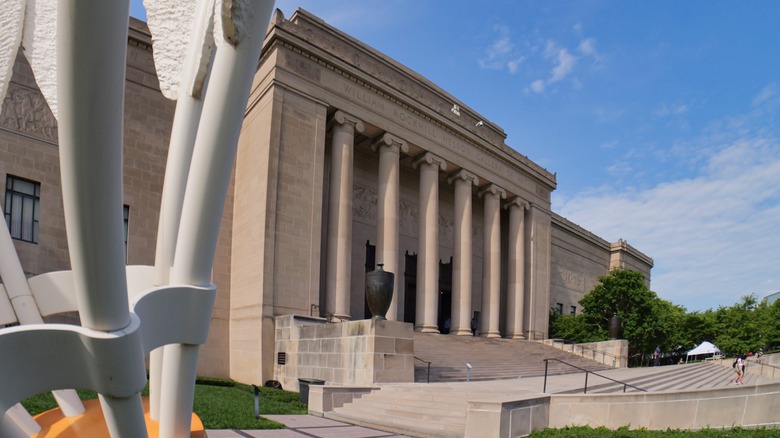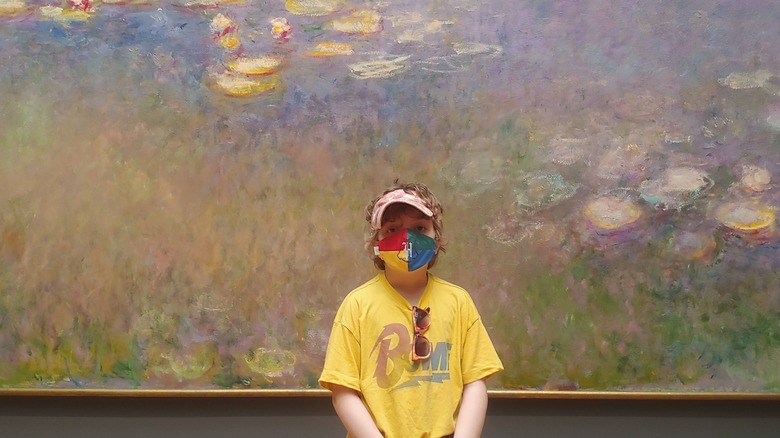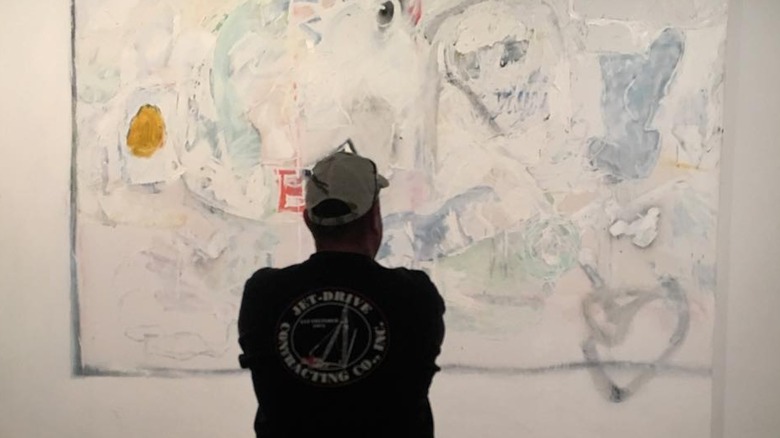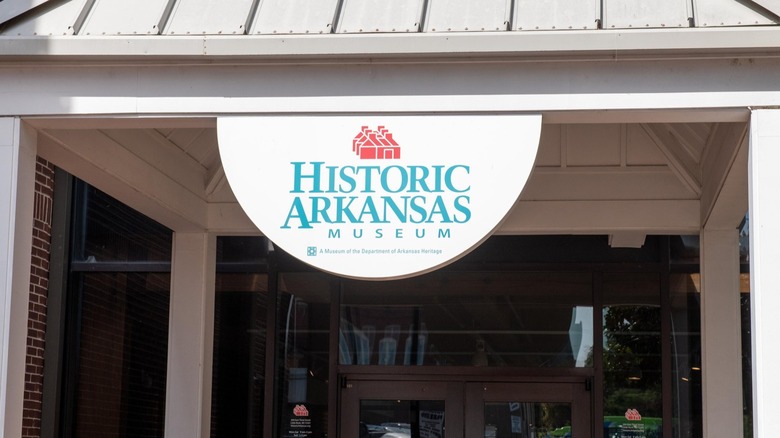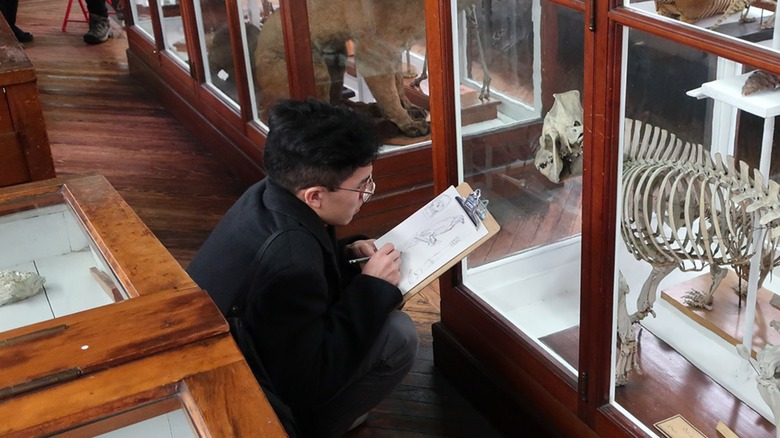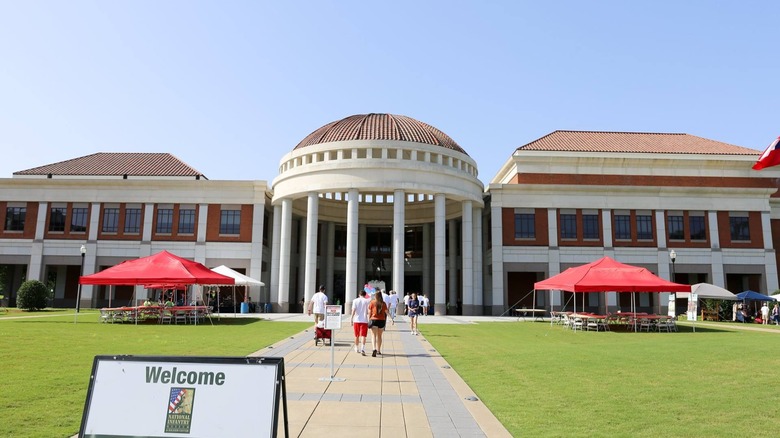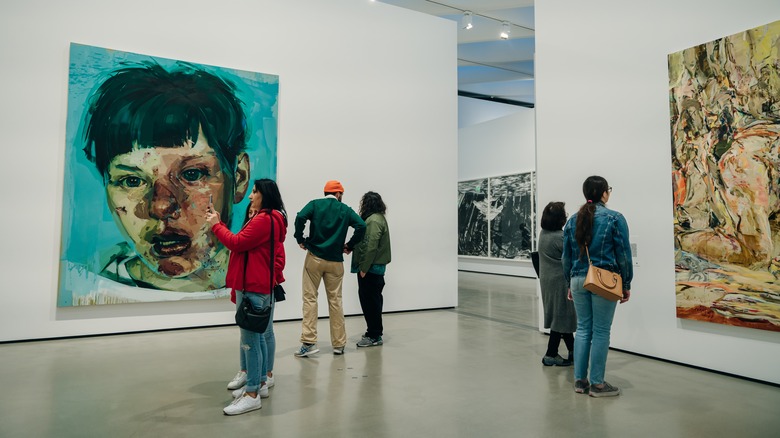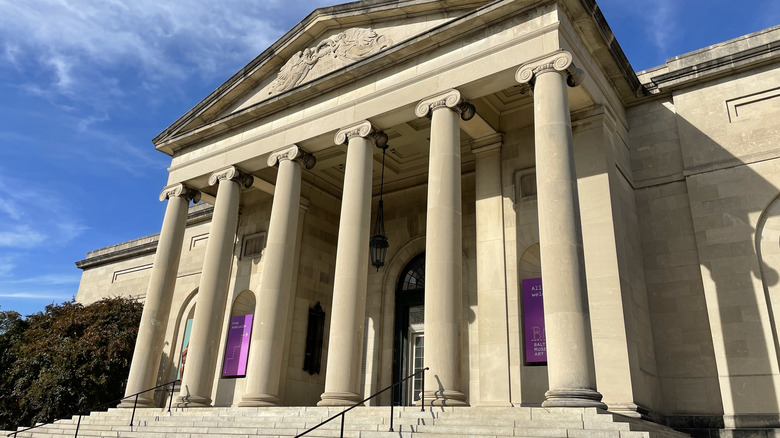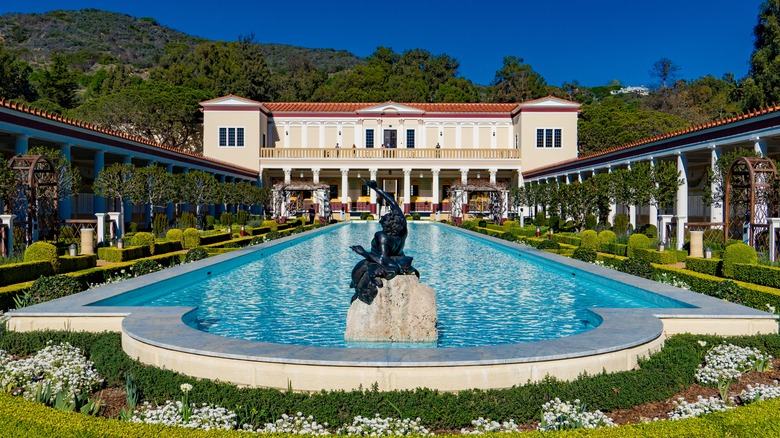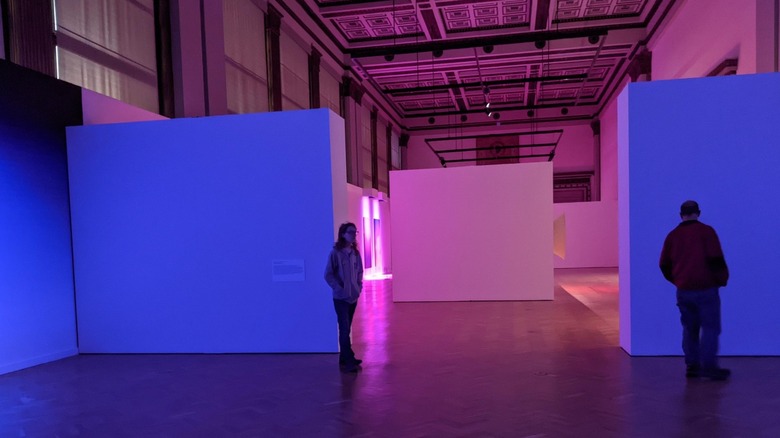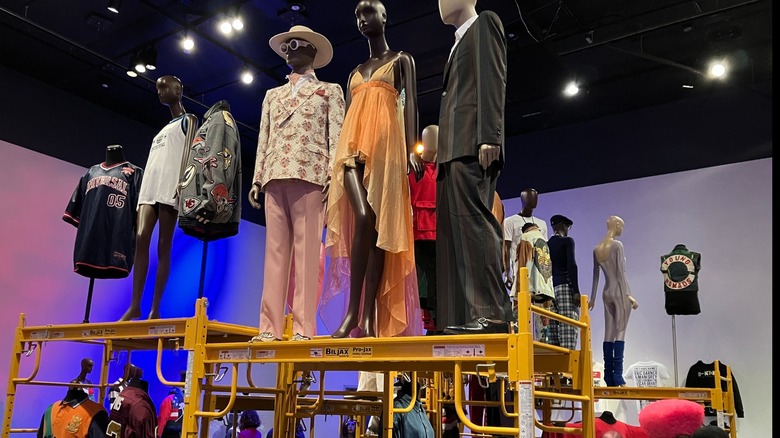The Best Free Museums To Visit Across The US
There's nothing quite like the fun of exploring a new city, walking down a path you've never traveled and experiencing new sights, sounds, and foods. But all of that dining out and entertainment can start to take a toll on your pocketbook the longer you're in town. If you're looking for a way to fill up your itinerary with cool, new experiences without draining your bank account, you might be surprised to learn that many cities feature world-class museums that are free and open to the public, which means more cash to spend on food truck snacks and kitschy mementos you just can't help but love.
Typically funded by donors or city funding, these museums are curated to give visitors a chance to connect with art, history, and the human experience, making often-priceless art and artifacts accessible to people from all walks of life. They're also a great place to while away the hours and broaden your cultural horizons at the same time. From ancient artifacts to architecture and even artillery, we've scoured the nation in search of the best museums to check out on your next getaway that won't cost you a dime.
The National Museum of Mexican Art in Chicago
With more than 37 million people of Mexican origin living in the United States today, Mexican heritage and culture are an integral part of the American story. Sharing the vibrant beauty of that heritage and highlighting the contributions of Mexican and Chicano artists to America's story is the focus of Chicago's National Museum of Mexican Art. Located in Chicago's predominantly Mexican neighborhood Pilson, the sprawling 48,000 square-foot institution boasts more than 18,000 pieces of art dating from ancient Mexico to the modern day.
One of the things that stands out about this museum is the variety of offerings that show Mexican-American culture not as a monolith but as a rich tapestry of experiences. The museum's permanent collection gives a look into a hauntingly beautiful past with artifacts dating back to pre-Cuauhtémoc Mexico during the Aztec period. The collection also takes visitors through the art of Colonial Mexico, Revolutionary-era Mexico, present-day Mexico, and present-day Mexican-American art. "Nuestras Historias: Stories of Mexican Identity from the Permanent Collection" emphasizes the diversity of Mexican identities and experiences in the United States and North America. Here, visitors can experience many presentations of cultural identity through the lens of different communities and regions, highlighting everything from folk art to modern Mexican art.
The Smithsonian Institution in Washington, D.C.
A veritable haven for museum lovers, Washington, D.C., is home to 74 museums, many of which are completely free to visit and fall under the umbrella of the Smithsonian Institution, a massive complex of federally-funded cultural centers that include some of the best museums in the world. There are so many to choose from, the hardest part is deciding where to spend your time.
If you're into art, the American Art Museum and Renwick Gallery is a good place to start. Renwick's focus on American craft and mixed media explores the increasingly blurred lines between studio art and craft in the 21st century. For art geeks who relish a good deep dive into art history, the Archives of American Art Lawrence A. Fleischman Gallery is home to 200 years of historical records and primary source material — everything from artists' to-do lists to personal diaries.
History buffs will find plenty to choose from, with museums like the National Postal Museum, which emphasizes the postal service's role in preserving democracy, and the National Museum of American History, with its focus on everything from first ladies to all-American cuisine. At the National Museum of African American History and Culture, visitors can explore such artifacts as a South Carolina plantation cabin, Harriet Tubman's hymnal, and Michael Jackson's fedora while checking out the works of other African-American artists. There's even a museum for dinosaur lovers — just check out the National Museum of Natural History to get your Jurassic Park on.
The Nelson-Atkins Museum
The Nelson-Atkins Museum is one of those massive museums with a little of everything for folks who appreciate history and art. Unless you're content with speed-browsing, it's the kind of place you could easily spend an entire day. The museum was built from the estates of a Kansas City businessman and a retired schoolteacher who wanted to see Kansas City get its own world-class art museum. Here, you'll find all sorts of treasures from the kid-friendly (and Instagrammable) giant badminton shuttlecocks to an extensive European art collection highlighting paintings from the likes of Edgar Degas, Caravaggio, Claude Monet, Rembrandt, and Vincent van Gogh.
The museum features an expansive collection of global art including an extensive Asian art collection. The celebrated collection includes many works including Chinese antique furniture (one of the best in the country), Japanese screens and scrolls, textiles, ceramics, sculptures, and hundreds of woodblock prints. Or take a stroll through the ancient world with an ancient art collection that includes Egyptian, Near Eastern, Greek, and Roman works. Other highlights include an African art exhibit featuring art from across Africa including Mali, Ghana, and Gabon, just to name a few, and Native American art galleries with hundreds of art pieces from thousands of years in the past, up to modern Indigenous art. The museum also features American, Modern, Photography, Contemporary, and Design and Decorative Arts galleries, as well as the Donald J. Hall Sculpture Park.
The St. Louis Art Museum in St. Louis
Like the Nelson-Atkins Museum, the St. Louis Art Museum, or SLAM, is an expansive space where guests could spend a whole day and still not see everything. Located in St. Louis' bucolic Forest Park and brimming with globe-spanning art and artifacts from prehistory to the present day, SLAM boasts an extensive permanent collection and hosts up to a half million visitors each year.
Starting with the lowest level, which features a collection of armor representing different periods throughout human history, every step of this striking museum is a trip through time and imagination. Once you've gotten over the excitement of standing mere inches away from medieval armor that once stood on an ancient battlefield, you can check out the museum's African, Oceanic, Ancient American, Islamic, and textile collections on the same floor.
If that seems like a lot, buckle up because you're just getting started. Climb the stairs to Level Two, and you'll find art from European masters like Picasso, Monet, and Van Gogh as well as a robust collection of Max Beckmann paintings and other post-war German art. Next, gaze far into the ancient past with SLAM's ancient art collection, where you'll see jewelry that once graced the necks of Flavian women, coins exchanged in markets millenia ago, and cuneiform scrawled near the dawn of human civilization.
Bronx Museum of the Arts in NYC
If you're interested in contemporary art, the Bronx Museum of the Arts is one of the best in the country — and it's completely free to visit. Located on the culturally diverse Grand Concourse near the Bronx Walk of Fame, the museum was initially launched in 1971 as a collaboration between the Metropolitan Museum of Art and the Bronx Council of the Arts. Although the Museum originally featured only a small collection, the popular spot has expanded significantly through the years and now features a permanent collection with more than 800 works of art.
With an emphasis on social justice and cultural heritage, the museum features contemporary art from American, Asian, Latin American, and African artists while highlighting the way art intersects with culture. It's a good way to cut through the touristy New York spots and get a sense of real life in this diverse New York community. Featuring exhibitions on everything from pop art to hip-hop, the Bronx Museum has a laid-back, more approachable vibe than many art museums you'll visit. Here, you'll also find photography telling the stories of life in the Bronx and depicting some of the major changes this community has seen through the years.
Historic Arkansas Museum in Little Rock
A state that was once home to Quapaw, Caddo, and Osage tribes and bore witness to the Westward Expansion, the Civil War, an oil boom, and a speculative diamond boom that fizzled out, Arkansas has a fascinating history and an equally rich heritage. Opened in 1941 with the aim of preserving that history, the Historic Arkansas Museum features an eclectic mix of art, artifacts, and living history that will capture the imagination of anyone interested in the story of life on the American frontier. To that end, one of the coolest features of the museum is its 1850s farmstead that includes a relocated log house, period fencing, and several other structures meant to demonstrate 19th-century rural life in Arkansas. Adjacent to the farmstead is a historic blacksmith shop and raised bed gardens.
It's no secret that Arkansas has had something of an image problem when it comes to its cultural sophistication. One of the museum's primary preoccupations is transforming the state's cultural image to emphasize the region's rich history of artisanship and artistry. Guests can also check out the museum's collection of historic jewelry, guns, and knives. The museum also boasts a stunning collection of 18th-century furniture featuring everything from sugar chests to a clothes press. Part of the museum's commitment to highlighting the state's diversity of cultural experiences is the museum's collection of historic quilts, including quilts created by enslaved people. Its pottery collection also includes a selection of Caddo pottery.
Wagner Free Institute of Science in Philadelphia
If you're the type of person who finds 19th-century academia one of the dreamier aesthetics or finds taxidermy and other natural oddities pleasing to the eye, then you'll fall in love with the Wagner Free Institute of Science. Stepping into this gorgeous museum is like stepping into a page from a history book. Virtually unchanged since it was first founded in the mid-1800s, Wagner Free Institute is a Victorian-era natural history museum complete with a library and research center.
Everything within the collection is displayed in Victorian glass cherry wood cabinets and presented in its original Victorian "systematic" arrangement, giving an authentic look at the world of 19th-century science. The museum itself includes around 100,000 specimens of taxidermy, mounted skeletons, and other preserved animals — an English draft horse, the first American saber-toothed tiger, dinosaur bones, and many small animals, insects, and birds are among the collection. The exhibit hall also features many small fossils, rocks, shells, and minerals. It's a favorite spot for artists to practice their craft, and the museum regularly hosts drawing sessions, so there's a good chance you'll catch some folks sketching out their take on a favorite moth or bird species, which only adds to the dark academia of it all.
National Infantry Museum and Soldier Center in Columbus, Georgia
Whether you're in the armed forces, a vet, a serious patriot, a history buff, or just someone who enjoyed the heck out of "Band of Brothers," the National Infantry Museum is a must-see gem you won't want to miss on the Georgia museum circuit. Dedicated to the experiences and values of United States Army infantry soldiers, the 190,000-square foot National Infantry Museum chronicles military history dating back to the American Revolution.
What stands out about many of the museum's exhibits is the way it brings guests up close and personal with U.S. military history, like with "The Last 100 Yards," a ramp containing dioramas featuring several key battles in United States history. Guests can even get a POV experience of a simulated infantry soldier mission with the museum's virtual reality exhibit. More than 70,000 historical artifacts are on display at the museum, along with monuments, video presentations, and interactive exhibits.
The museum also offers a chance to pay tribute to the service people who gave their lives for the country. The Global War on Terrorism Memorial is dedicated to the more than 7,000 soldiers, airmen, sailors, and marines who made the ultimate sacrifice in the post-9/11 effort to fight terrorism and includes a steel beam from the World Trade Center and engraved panels with service members' names.
The Broad in Los Angeles
For art lovers looking for an overwhelming sensory experience, the Broad is a wonderful place to spend an afternoon. Located in downtown Los Angeles, the Broad is a contemporary art museum featuring a dynamic collection of art from the 1950s to today. With its cave-like interior that feels like it's straight out of Tatooine, the building itself is art. A smaller collection that packs a lot of punch, the Broad features more than 2,000 works from over 200 artists and is notable for maintaining one of the premier contemporary art collections in the world.
One of the museum's biggest draws is its collection of Yayoi Kusama's two "Infinity Mirrored Rooms." These heavily-instagrammed rooms feature countless pulsing points of light reflected in water and mirrors to create a sense of infinity as if you've lost yourself in time and space. You'll also find Jeff Koons' "Tulips" and "Balloon Dog (Blue)," two large sculptures meant to resemble mylar balloons. You can relive the feeling of hiding under a table as a kid with Robert Therrien's "Under the Table," a giant dining room furniture set. Other featured artists include Cindy Sherman, Takashi Murakami, Andy Warhol, Mark Bradford, and Jean-Michel Basquiat, among many others. Guests are also invited to access a selection of digital resources to enhance their visit, including a mobile museum guide and free audio tours.
Baltimore Museum of Art
Like SLAM and Nelson-Atkins, the Baltimore Museum of Art is an art museum with a collection of art and artifacts so extensive, it would be easy to lose time there. It's a fantastic museum for taking in a historical perspective on art, but it's especially notable for its impressionist collection. If European art is high on your list of interests, you won't want to miss it. Founded in 1914 and currently housed in a 1920s neoclassical building designed by John Russell Pope, the 210,000 square-foot Baltimore Museum of Art boasts a collection of 97,000 artifacts and works of art spanning continents and eras with a special emphasis on 18th- through 20th-century art. The Nancy Dorman and Stanley Mazaroff Center for the Study of Prints, Drawings, and Photographs features thousands of photographs and drawings, including 57,000 prints with art dating from the 15th century to present.
But if you only see one thing there, it needs to be the museum's Matisse collection. Located adjacent to the Mazaroff Center is the Ruth R. Marder Center for Matisse Studies, which includes a dedicated exhibition gallery, library, and study room containing more than 600 works by French visual artist Henri Matisse. The Matisse collection is part of the museum's larger Cone Collection, a collection amassed by sisters Etta and Claribel Cone that also includes works by Van Gogh, Gauguin, Degas, Cézanne, and Picasso.
Getty Villa Museum and Getty Center in Los Angeles
If you've always dreamed of exploring the ruins of Pompeii or Herculaneum to imagine what life was like in the Roman Empire, you may be surprised there's a piece of the Roman Empire in Los Angeles — or at least a replica of one. Located in the Pacific Palisades, the Getty Villa Museum lets visitors take a stroll through the ancient world as they wander through a recreation of a Roman country home filled with Greek and Roman antiquities. The villa itself is based on a Roman home known as the Villa de Papiri, which was destroyed in the eruption of Mount Vesuvius.
The estate is one of two locations that make up the Getty Center, an expansive visual art and cultural heritage center. Expanded from the private collection once housed in J. Paul Getty's Pacific Palisades home, the Getty Center branch is located in L.A.'s Brentwood neighborhood. Upon arrival, visitors are invited to stop by the Lower Tram Station and board a tram that climbs to the top of the Getty Center. The museum's art collection features art dating back from 6,000 B.C.E., through modern art from the present day. Getty's medieval and Renaissance works include rotating manuscripts, decorative arts, and sculpture. Here, guests can also view Italian art and sculpture from the 1600s and French decorative art including furnished rooms. When you've finished taking all of that in, be sure to check out the contemporary and modern sculptures scattered across the grounds.
Chicago Cultural Center
There's a reason people can't get enough of Chicago. This bustling cosmopolitan city's history is overflowing with gifted artists and musicians and colorful figures, a history that led up to the diverse and modern metropolis we find there today. And the Chicago Cultural Center is all about capturing what makes Chicago a community like no other.
First opened in 1897, the Chicago Cultural Center was the first free municipal cultural center in the United States. Located downtown, the building itself is a Chicago landmark and is a popular destination for visitors to the area, one you're likely to see a lot of folks snapping photos of. A neoclassical and Italian Renaissance-inspired marvel, the building features details like Doric columns, coffered ceilings, Vermont and Carrara marble, stained-glass domes, mosaics, and a three-story vaulted lobby. It's known locally as "The People's Palace."
On the Center's west exterior facade lies a Kerry James Marshall mural "Rush More," which is dedicated to culturally impactful Chicago women like Gwendolyn Brooks, Oprah Winfrey, and Sandra Cisneros. The Center's rotating cultural and visual art exhibitions are also worth checking out. Past exhibitions have included "The Great Chicago Fire in Focus," "Nelly Agassi: No Limestone, No Marble," and the immersive "Luftwerk: Exact Dutch Yellow."
The Museum at FIT in NYC
For anyone who loves fashion, no trip to New York should leave off a stop to the Fashion Institute of Technology's (FIT) fashion museum. Part of the State University of New York (SUNY), FIT is considered by many to be one of the top fashion schools in the world. Initially called the Design Laboratory, the FIT Museum was opened in 1969 to present a public collection of fashion-related textiles, clothing, and accessories. Today, the museum's permanent collection includes more than 50,000 garments and accessories, making it a must-see for the sartorially inclined.
Inside, guests will find three galleries to explore. On the main floor, a rotating collection presents around 200 pieces from FIT's permanent collection as part of the Fashion and Textile History Gallery. Explore how fashion has evolved over time beginning with 18th-century Rococo fashions through the modern era with an insightful look at the intersection between culture, the zeitgeist, and the fashion of an age.
In the second gallery, you'll find rotating exhibitions on every imaginable fashion-related subject. A few notable examples of past exhibition topics include "The Corset: Fashioning the Body," "Dior + Balenciaga: The Kings of Couture and Their Legacies," and "Fashion Underground: The World of Susanne Bartsch." There's also a third gallery dedicated to presenting fashions from FIT faculty and student collections where you may get a chance to check out tomorrow's Christian Siriano.
